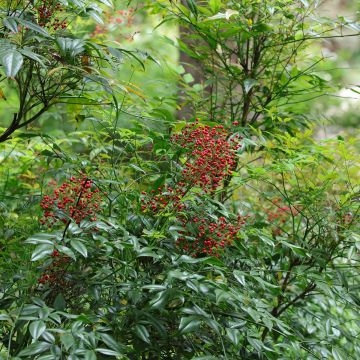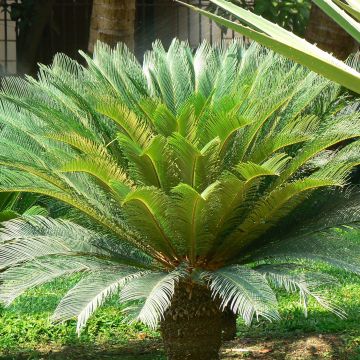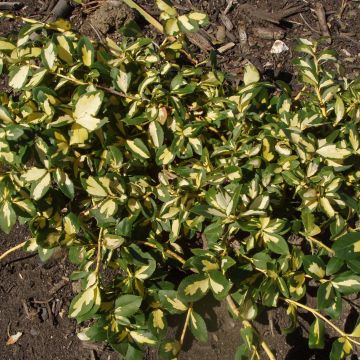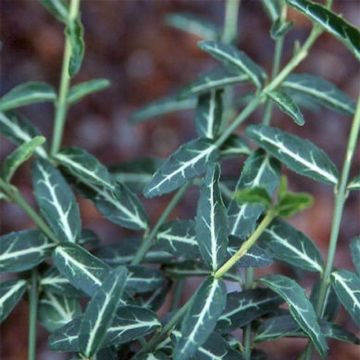

Nandina domestica Brightlight - Sacred Bamboo


Nandina domestica Brightlight - Sacred Bamboo


Nandina domestica Brightlight - Sacred Bamboo
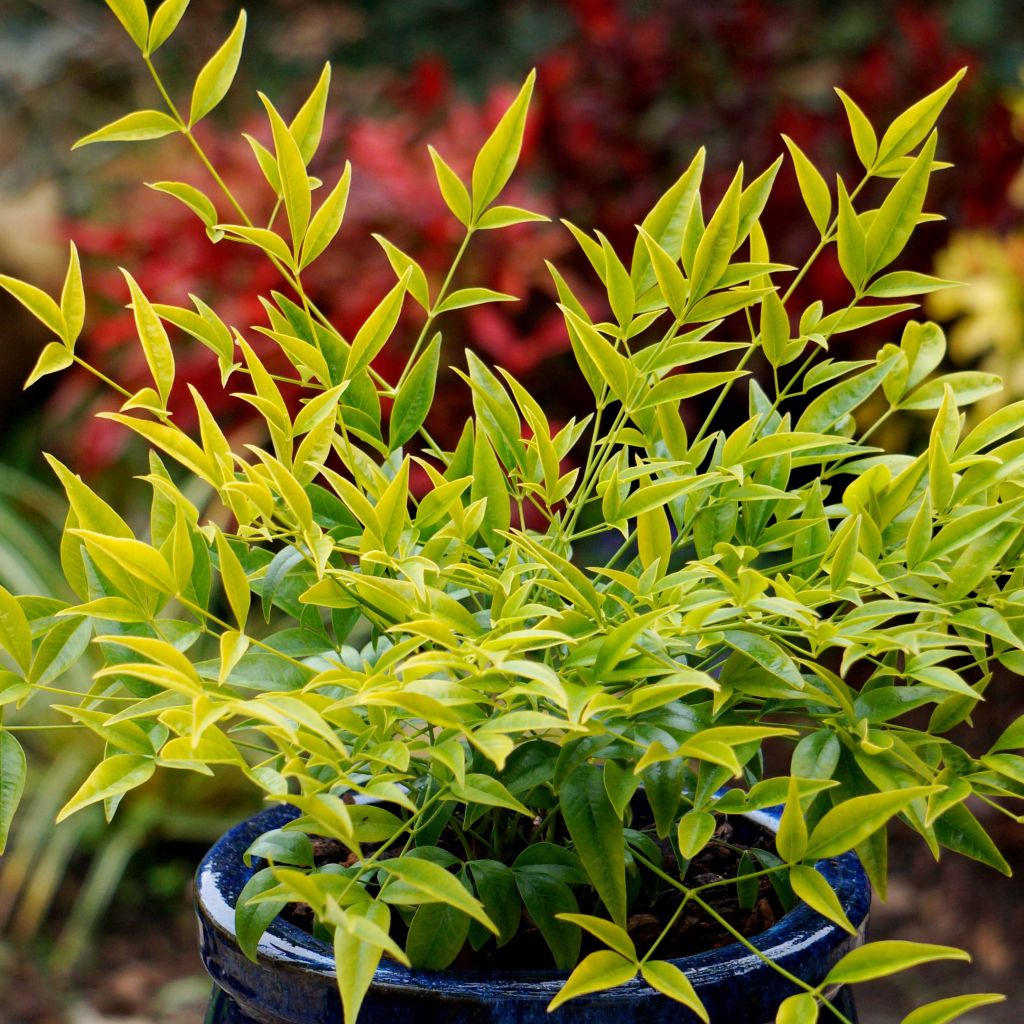

Nandina domestica Brightlight - Sacred Bamboo
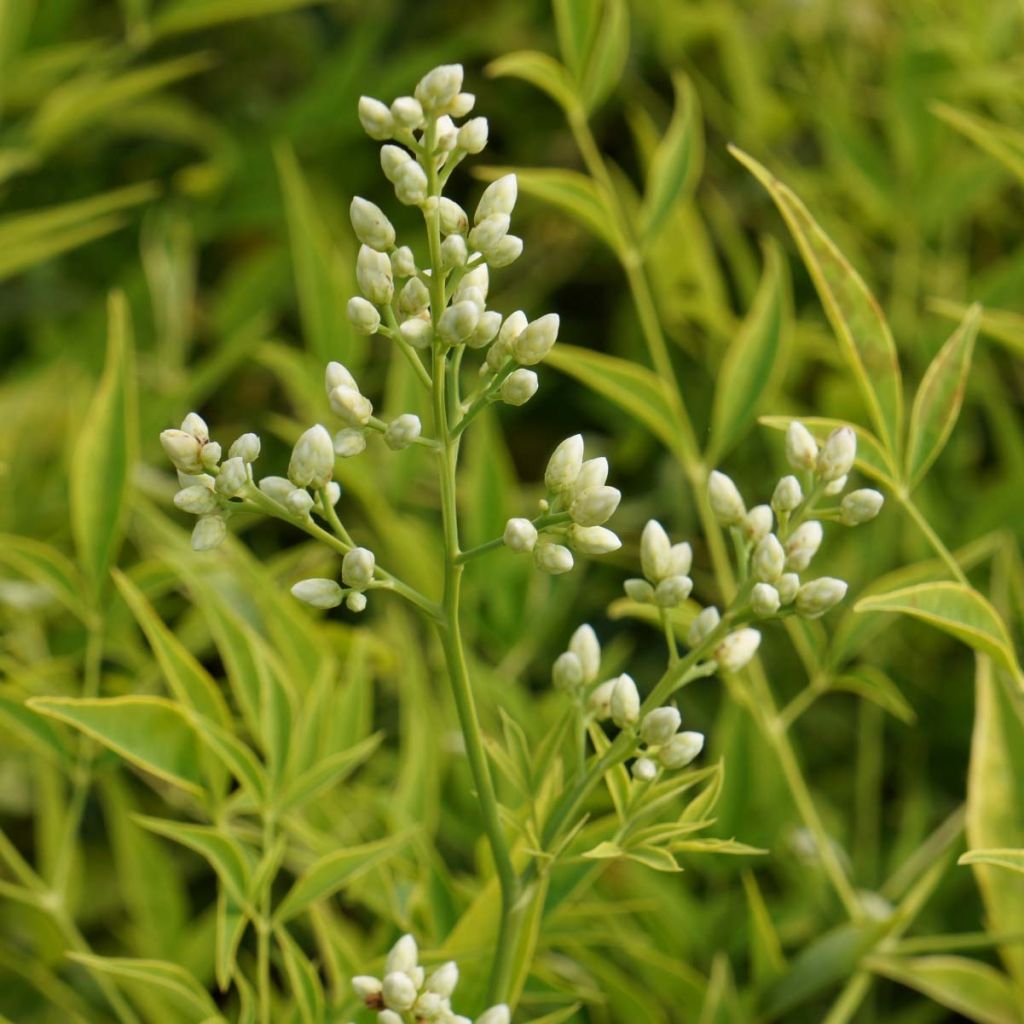

Nandina domestica Brightlight - Sacred Bamboo
Nandina domestica Brightlight - Sacred Bamboo
Nandina domestica Brightlight
Sacred Bamboo, Heavenly Bamboo
Disappointed by the habit of this bush which doesn't match neither the description nor the photos.
Dominique, 24/09/2023
Why not try an alternative variety in stock?
View all →This plant carries a 24 months recovery warranty
More information
We guarantee the quality of our plants for a full growing cycle, and will replace at our expense any plant that fails to recover under normal climatic and planting conditions.
From €5.90 for pickup delivery and €6.90 for home delivery
Express home delivery from €8.90.
Delivery to Corse prohibited: UE law prohibits the import of this plant from mainland France to Corse as part of the fight against Xylella fastidiosa. Please accept our sincere apologies.
More information
Does this plant fit my garden?
Set up your Plantfit profile →
Description
Nandina domestica 'Brightlight', which is one of the most cold-resistant sacred bamboos, is a particularly elegant and bright variety, with its palm-like appearance and long, finely-cut leaves which are lemon-green in spring. This bush is decorative all year round, thanks to its light foliage that persists in winter and beautiful summer flowering in white panicles. Although this variety rarely fruits, its form and fresh colour are enough to appreciate it in flower beds, or in large pots on balconies or terraces, in all regions. The Sacred Bamboo is an undemanding plant and easy to grow in ordinary soil.
The 'Brightlight' Sacred Bamboo belongs to the berberidaceae family. It is a recent variety, bred and awarded in the Netherlands in 2014. This small bush is a particularly hardy form with large "discoloured" leaves of the Nandina domestica native to India, China, and Japan. Its growth is quite slow and it reaches a mature size of about 1.50m (4ft 11in) in height and 1m (3ft 4in) in width. This plant, with its upright silhouette and flexible habit, forms erect and branched stems resembling those of bamboo. They are adorned with particularly large leaves for the species, also finely cut into narrower leaflets than the species. In spring, the young leaves are lime green with a hint of yellow. Then the green colour becomes chartreuse. Flowering occurs in June-July, in the form of conical panicles of white-cream flowers, occasionally followed by clusters of shiny red fruits.
The Brightlight Sacred Bamboo is valuable for enlivening shady or semi-shady areas, especially as it tolerates the presence of the roots of large trees quite well. It can be associated with other sacred bamboos in more flamboyant tones (Richmond, Sienna Sunrise, Obsessed Seika), a Mexican orange, Japanese Crispa spireas, a Loropetalum, Griffith's euphorbias 'Fire Glow', or orange daylilies. Each of these combinations will be a success. This small bush will also be magnificent in a large pot on the terrace, in a non-scorching exposure and with regular watering. In a small hedge, it can be accompanied, by Edward Goucher Abelia, Japanese Azaleas, Nikko Deutzia crenata, or Sarcococca hookeriana Humilis.
Report an error about the product description
Nandina domestica Brightlight - Sacred Bamboo in pictures


Plant habit
Flowering
Foliage
Botanical data
Nandina
domestica
Brightlight
Berberidaceae
Sacred Bamboo, Heavenly Bamboo
Cultivar or hybrid
Other Nandina
Planting and care
Plant Brightlight Sacred Bamboo in a soft, deep, well-drained, slightly acidic, neutral, or even slightly chalky soil which is moderately dry to moist. Once well established, this plant tolerates summer drought well, if the soil is deep. It prefers sunny but not scorching situations, or partial shade. Avoid drying winds and choose a sheltered location protected from severe cold. This bush is hardy down to -18°C (-0.4°F) under optimal conditions, so protect its base with a thick layer of dead leaves before winter in our coldest regions. If the above-ground part were to freeze, prune the plant to ground level in February-March. Pruning is limited to removing dead wood and excessive or weak branches in winter.
Planting period
Intended location
Care
-
, onOrder confirmed
Reply from on Promesse de fleurs
Shrubs for pots
Haven't found what you were looking for?
Hardiness is the lowest winter temperature a plant can endure without suffering serious damage or even dying. However, hardiness is affected by location (a sheltered area, such as a patio), protection (winter cover) and soil type (hardiness is improved by well-drained soil).

Photo Sharing Terms & Conditions
In order to encourage gardeners to interact and share their experiences, Promesse de fleurs offers various media enabling content to be uploaded onto its Site - in particular via the ‘Photo sharing’ module.
The User agrees to refrain from:
- Posting any content that is illegal, prejudicial, insulting, racist, inciteful to hatred, revisionist, contrary to public decency, that infringes on privacy or on the privacy rights of third parties, in particular the publicity rights of persons and goods, intellectual property rights, or the right to privacy.
- Submitting content on behalf of a third party;
- Impersonate the identity of a third party and/or publish any personal information about a third party;
In general, the User undertakes to refrain from any unethical behaviour.
All Content (in particular text, comments, files, images, photos, videos, creative works, etc.), which may be subject to property or intellectual property rights, image or other private rights, shall remain the property of the User, subject to the limited rights granted by the terms of the licence granted by Promesse de fleurs as stated below. Users are at liberty to publish or not to publish such Content on the Site, notably via the ‘Photo Sharing’ facility, and accept that this Content shall be made public and freely accessible, notably on the Internet.
Users further acknowledge, undertake to have ,and guarantee that they hold all necessary rights and permissions to publish such material on the Site, in particular with regard to the legislation in force pertaining to any privacy, property, intellectual property, image, or contractual rights, or rights of any other nature. By publishing such Content on the Site, Users acknowledge accepting full liability as publishers of the Content within the meaning of the law, and grant Promesse de fleurs, free of charge, an inclusive, worldwide licence for the said Content for the entire duration of its publication, including all reproduction, representation, up/downloading, displaying, performing, transmission, and storage rights.
Users also grant permission for their name to be linked to the Content and accept that this link may not always be made available.
By engaging in posting material, Users consent to their Content becoming automatically accessible on the Internet, in particular on other sites and/or blogs and/or web pages of the Promesse de fleurs site, including in particular social pages and the Promesse de fleurs catalogue.
Users may secure the removal of entrusted content free of charge by issuing a simple request via our contact form.
The flowering period indicated on our website applies to countries and regions located in USDA zone 8 (France, the United Kingdom, Ireland, the Netherlands, etc.)
It will vary according to where you live:
- In zones 9 to 10 (Italy, Spain, Greece, etc.), flowering will occur about 2 to 4 weeks earlier.
- In zones 6 to 7 (Germany, Poland, Slovenia, and lower mountainous regions), flowering will be delayed by 2 to 3 weeks.
- In zone 5 (Central Europe, Scandinavia), blooming will be delayed by 3 to 5 weeks.
In temperate climates, pruning of spring-flowering shrubs (forsythia, spireas, etc.) should be done just after flowering.
Pruning of summer-flowering shrubs (Indian Lilac, Perovskia, etc.) can be done in winter or spring.
In cold regions as well as with frost-sensitive plants, avoid pruning too early when severe frosts may still occur.
The planting period indicated on our website applies to countries and regions located in USDA zone 8 (France, United Kingdom, Ireland, Netherlands).
It will vary according to where you live:
- In Mediterranean zones (Marseille, Madrid, Milan, etc.), autumn and winter are the best planting periods.
- In continental zones (Strasbourg, Munich, Vienna, etc.), delay planting by 2 to 3 weeks in spring and bring it forward by 2 to 4 weeks in autumn.
- In mountainous regions (the Alps, Pyrenees, Carpathians, etc.), it is best to plant in late spring (May-June) or late summer (August-September).
The harvesting period indicated on our website applies to countries and regions in USDA zone 8 (France, England, Ireland, the Netherlands).
In colder areas (Scandinavia, Poland, Austria...) fruit and vegetable harvests are likely to be delayed by 3-4 weeks.
In warmer areas (Italy, Spain, Greece, etc.), harvesting will probably take place earlier, depending on weather conditions.
The sowing periods indicated on our website apply to countries and regions within USDA Zone 8 (France, UK, Ireland, Netherlands).
In colder areas (Scandinavia, Poland, Austria...), delay any outdoor sowing by 3-4 weeks, or sow under glass.
In warmer climes (Italy, Spain, Greece, etc.), bring outdoor sowing forward by a few weeks.




































